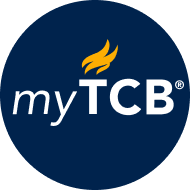


Members of The Conference Board get exclusive access to the full range of products and services that deliver Trusted Insights for What's Ahead ® including webcasts, publications, data and analysis, plus discounts to conferences and events.
10 July 2023 / Article
Rapid advances in artificial intelligence promise to give businesses a competitive edge in ensuring their workforces are equipped with essential skills of the future—especially those related to the digital and green economy. Understanding how skills and jobs are transforming is critical, not just for targeted recruitment, but also for plugging skills gaps by reskilling and upskilling existing workers.
Until the recent advances in AI, companies have lacked the capability for predictive skills planning and forecasting. Traditional workforce planning has struggled to keep pace with the changing skills landscape. As one executive in our research series on skills commented: “No sooner do we complete our workforce analysis, then it’s already out of date and we have to start all over again.” Another interviewee said that before investing in the new AI based tools: “Our traditional workforce planning—meaning capacity and cost—did not showcase who the company needed to hire.”
Rapid advances in artificial intelligence promise to give businesses a competitive edge in ensuring their workforces are equipped with essential skills of the future—especially those related to the digital and green economy. Understanding how skills and jobs are transforming is critical, not just for targeted recruitment, but also for plugging skills gaps by reskilling and upskilling existing workers.
Until the recent advances in AI, companies have lacked the capability for predictive skills planning and forecasting. Traditional workforce planning has struggled to keep pace with the changing skills landscape. As one executive in our research series on skills commented: “No sooner do we complete our workforce analysis, then it’s already out of date and we have to start all over again.” Another interviewee said that before investing in the new AI based tools: “Our traditional workforce planning—meaning capacity and cost—did not showcase who the company needed to hire.”
Companies urgently require real-time, granular data to analyze trends in the demand and supply for skills, to identify skills gaps for talent strategies (buy, build, borrow talent), and to explore technology-based talent solutions (through automation or augmentation).
These data are exactly what AI tools can provide. AI-based labor market analytical tools can generate rich, actionable skills insights from labor market and macroeconomics data. AI-based skills planning platforms can combine both structured and unstructured internal workforce data to reveal both the supply and demand for skills internally. The combination of external and internal data, powered by AI, constitutes groundbreaking new capability in skills intelligence.
AI-based tools and platforms can employ a variety of skills analysis approaches. These include:
Principal Researcher, Human Capital, Europe
The Conference Board

myTCB® Members get exclusive access to webcasts, publications, data and analysis, plus discounts to events.
You already have an account with The Conference Board.
Please try to login in with your email or click here if you have forgotten your password.
AI & Talent Transformation: Hiring, Skills, and Workforce Strategy
November 19, 2025

